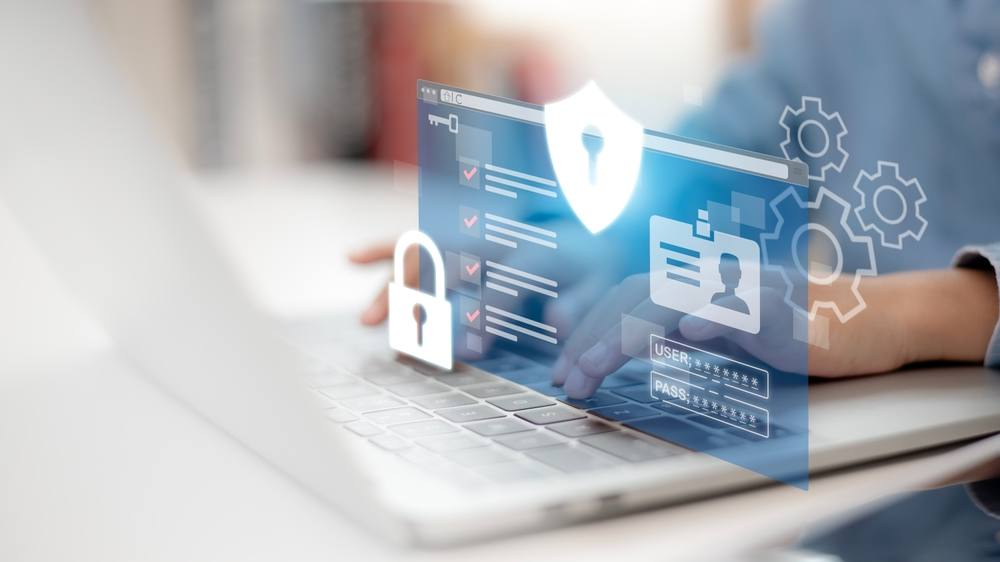How To Create An IT Stack In A Gig Economy

The prevalence of short-term, flexible jobs or “gigs” as opposed to traditional, long-term employment gives workers the flexibility to choose when and where they work.
From a business perspective, hiring independent contractors or freelancers on short-term contracts removes some of the financial burden from the payroll.
However, firms face other challenges. The gig economy has been significantly moulded by technological advances and for the most part, technology plays a crucial role in facilitating gig work.
There are solutions, of course. But you need to get your IT stack right. Creating an IT stack in a gig economy involves assembling a set of tools and technologies that can support the flexibility and collaborative nature of a gig-based workforce.
In this article, we’re going to take a look at some of the most crucial technologies and strategies you need to install to
a) ensure that communication, collaboration and productivity are possible, and
b) protect your data and intellectual property.
What Technologies Are Ideal in a Gig Economy IT Stack?
Before you start building an IT stack that can accommodate remote, short-term projects, it is important to identify the specific needs and workflows of a gig-based workforce. Consider the types of tasks they perform, collaboration requirements, and the tools that would enhance their productivity
The Cloud
Cloud-based applications and data can be accessed from any location with an internet connection, providing gig workers the flexibility to work from anywhere in the world.
This also means that UK businesses can work with specialists in parts of the world that don’t command such high fees as contractors in the UK and Europe.
The device independence of the cloud also enables gig workers to connect on different devices (laptops, tablets, smartphones). This can help them to be more productive and respond to urgent messages promptly.
Remember to take time zones into account. Normal office hours in the UK will be during the evening for a contractor in Asia say. So if you’re working with a developer in Indonesia, they may be having their evening meal with their family when you need a question answering urgently. Sending an IM to a project management platform may not receive an immediate response if they don’t have the app on their smartphone.

When you are time-synched with a gig worker, cloud-based collaboration tools facilitate real-time collaboration among gig workers, clients, and team members, allowing them to work together seamlessly on projects.
Depending on the nature of your business and the likelihood of working with multiple contractors in the gig economy, you may want to think about tools that can scale with the growing needs of a gig-based workforce.
The likelihood of this may be a deciding factor in the platform and tools you use. Should you use cloud-based platforms that feature collaboration tools or will a project management platform suffice to oversee the project?
Cloud-Based Collaboration Tools
It’s almost inevitable that you will require cloud-based collaboration tools. They are certainly the most secure option from a data protection viewpoint (more on that later).
But digital platforms also facilitate communication, teamwork, and the sharing of resources among individuals or groups. These valuable tools are hosted in the cloud, allowing users to access them from any location with internet connectivity.
The burning question is whether you build an IT stack using various tools, or go for an all-in-one bundle.
The pros of an all-in-one bundle such as Microsoft 365 is that you get all the tools you need in a single easy-to-manage package. The cons are that bundles may not do everything you need which means you have to upgrade to a higher subscription where you could be paying for services you don’t need. Which means you’re paying for convenience.
On the other hand, if cost is a priority, there are plenty of free platforms such as Dropbox and Zoom which enable you to share files and hook up on video conference. The downside is there is a higher risk of downtime which could also prove costly.
If cost is a consideration, we should come back to the question we asked earlier. Will you need to scale your gig economy workforce? If so, bear in mind that subscription services like Microsoft 365 are charged per person.
Project management tools on the other hand allow you to add users at no extra cost, although some of them have a limit on the number of users you can add. Trello, however, gives you an unlimited number of users.
The third alternative is to work with a managed IT support team and build an affordable IT stack which guarantees high availability and additional security that protects your business from a data breach.
Communication Tools
Communication tools are an essential piece of the gig economy puzzle. Ideally, you should be building a virtual collaboration space where gig workers can share ideas, updates, and resources with their co-workers on-site.
Lines of communication should be varied; instant messenger, video conferencing, email, file sharing and document sharing. Again, the virtual space can be a dedicated channel or project-specific platform or a combination of various technologies.
The same challenges mentioned above apply; a cumulative IT stack can crash more often. If communication and collaboration tools are all you need, free Microsoft Tools or a Google Workspace account will suffice.
Bear in mind that free accounts have a storage limitation of 15GB with Google and 5GB with Microsoft. So you will probably need to subscribe to a higher package unless you intend to completely separate your business storage facility from your gig economy storage.
Both Microsoft and Google give you the tools to share files, work on the same document and edit at the same time, and connect in real-time using video conferencing software with screen-sharing functionality.

Project Management Platforms
Project management tools play a crucial role in organising and managing tasks related to a project by providing a structured and efficient way for gig workers to plan, organise, and collaborate on projects.
Implementing a project management platform enables you to facilitate task management, set deadlines and track progress, and collaborate from a central location. This snapshot overview makes it easier for remote gig workers to prioritise tasks based on deadlines, importance, or project dependencies.
Most project management tools include communication features, such as comments, messaging, and notifications, streamlining communication within the platform together with centralised file storage, allowing gig workers to upload, share, and access project-related documents and files in one location.
Features for feedback and approval also streamline communication loops, ensuring that clients can provide input directly within the project management platform.
Project management platforms tend to have more challenges than cloud-based technologies. For example, some project management tools may have limitations in terms of customisation which makes it difficult for gig workers to tailor the tools they use to your software.
It’s also worth bearing in mind how complex your project is and whether a project management tool is really necessary for a freelancer. Project management tools may have a learning curve that gig workers may be happy with and could potentially impact initial productivity.
For very small projects or simple tasks, the features of some project management tools might be unnecessary. Subsequently, deploying a project management tool might add overhead in terms of time and effort, particularly for solo gig workers who may prefer simpler solutions.
Time Tracking and Invoicing Tools
We recommend implementing tools that enable gig workers to track their time and create invoices easily. This is crucial for accurate payment and project billing but transparency also helps to build trust with contractors and reduce invoice disputes.
You can also improve relationships by utilising HR onboarding strategies. This gives you the opportunity to inform freelancers about your company, your mission and values, together with granular insights about the project and what is expected of them.
Time tracking and invoicing tools often support various billing models, such as hourly rates, fixed fees, or milestone-based billing. This flexibility allows gig workers to choose the most suitable billing approach for each client or project.
What Cybersecurity Measures Do You Need For A Gig Economy?
One of the potential challenges of building an IT stack in a gig economy is securing the operations of gig workers. With companies under pressure to protect sensitive data and maintain trust from clients, employees and investors, cybersecurity measures are a priority.
Cybersecurity involves securing network access, devices and endpoints using a variety of methods including data encryption, and multi-factor authentication for accessing critical systems and tools.
This can pose problems when working with remote workers who are not employees. For example, your in-house cybersecurity protocols may prevent remote employees from using public Wi-Fi for sensitive work-related tasks. This is difficult to enforce in a gig economy where it is a popular choice to work in cafes and workspace hubs.

You can establish clear security standards in your contracts with contractors. Define responsibilities related to data protection and establish guidelines for secure communication and data handling. However, this can be difficult to police in some cases.
Fortunately, cloud security measures include access controls which recognise the device, general location such as a city — and crucially the IP address. This helps you to enforce the no public Wi-Fi rule and ensure gig workers are only accessing certain files from their home network.
Not that you can rely on home networks to be entirely secure either. But there are also protective measures you can take here as well using end-to-end encryption and securing endpoints.
You should also enable multi-factor authentication (MFA) for all accounts, including email, project management tools, and financial accounts. This adds an extra layer of security beyond passwords and can be used as another safety net to ensure freelancers are not connected to your network from unauthorised Wi-Fi connections.
Keeping all devices, including laptops, tablets, and smartphones, updated with the latest security patches and antivirus software is also essential. Because software is susceptible to vulnerabilities, software companies have to continuously release updates.
It is considered negligible if you rely on everyone, especially contractors, to update software with the latest security patch. A safer, worry-free method of updating security patches is using a patch management service.
Other Cybersecurity Measures To Consider in a Gig Economy
UK companies are obliged to comply with relevant data protection and privacy regulations such as GDPR. In addition to installing cybersecurity technologies, business owners also have to ensure that their cybersecurity practices align with legal requirements.
Technology does a pretty good job of protecting business data from cybercriminals. However, there are other precautions we recommend you take that fall outside your actual IT stack.
First of all, choose a reputable cloud platform with strong security measures. Ensure that data stored in the cloud is encrypted both in transit and at rest. And if you’re working with a managed IT support team, ensure they provide comprehensive cybersecurity cover that is geared towards remote workers.
You should also ensure that the contractor you are working with is familiar with your cybersecurity measures. This includes how to identify security threats, how to avoid malware that could lead to a breach and how to report suspicious activity.
You should also stay informed about common cybersecurity threats. Attend training sessions or webinars to understand the latest tactics used by cybercriminals, especially in phishing and social engineering attacks. Micro Pro periodically publish blogs listing the latest hacking techniques.
It’s also essential to conduct regular security audits or assessments to identify and address potential vulnerabilities in your digital infrastructure. This is also something that working with a managed IT support team can help you with. It is our duty to monitor and be aware of potential gateways that can be exploited by bad actors.
Managed IT Support in London
If you’re working in a gig economy and think you can benefit from having the right technologies in place for an affordable cost, contact Micro Pro and speak with our knowledgeable executives. With over 10 years of experience working across multiple sectors, Micro Pro has built a reputation as a reliable and trustworthy managed IT support provider.


